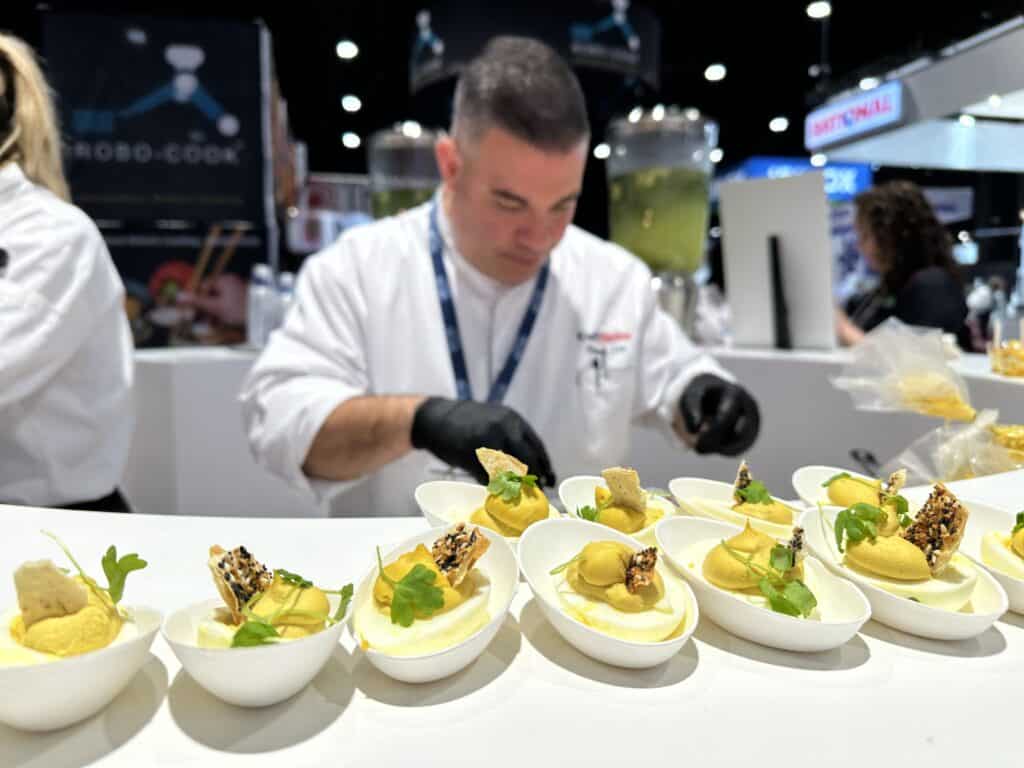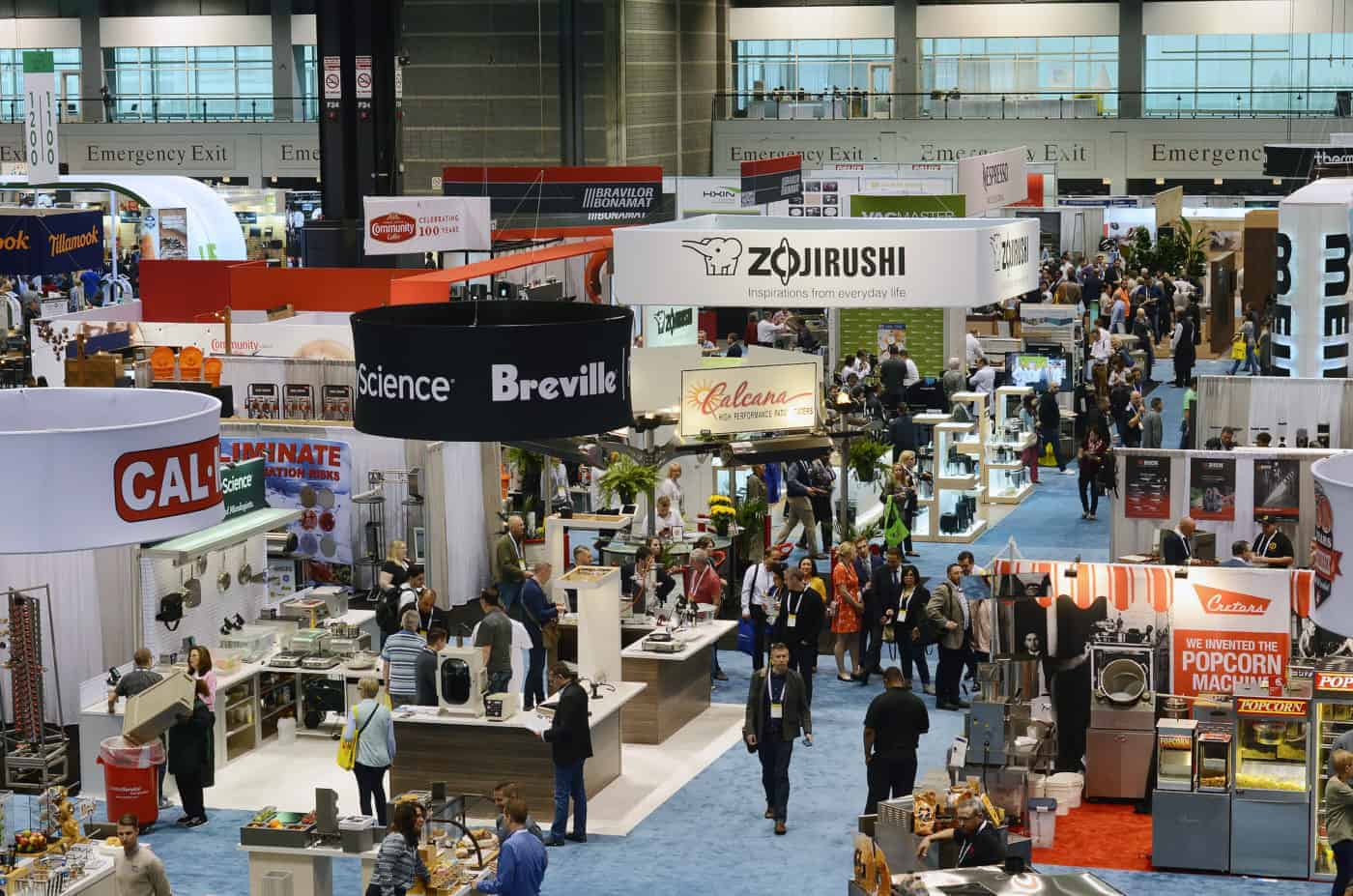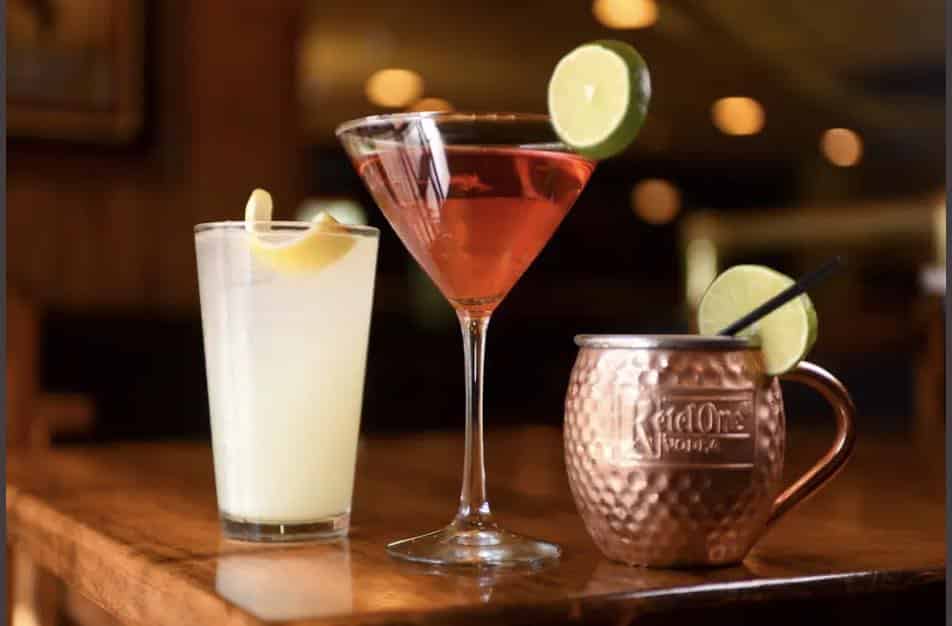Another edition of the world’s largest gathering of food service and hospitality professionals has come and gone. And while the National Restaurant Association’s annual show is a wrap, the lessons and energy gathered will continue to power the industry well through 2023 and into next year. It would be hard to sum up everything that happened on the hundreds of thousands of feet of show space or in the dozens of hours of educational programming in anything less than a multi-part epic. Nevertheless, a handful of things stood out this year, and in case you missed the show or just got caught in the Heinz booth waiting for your personalized bottle of ketchup, we’re here to bring you the latest and greatest.
Plant-Based Blossoming
The growing popularity of plant-based and alternative proteins has been underway for a long time. However, innovations in this segment exploded in recent years, and its prominence continued to grow in Chicago. The organic and natural pavilion was larger, more central, and stuffed with everything from plant-based shrimp and seafood to dairy-free cheese, eggless eggs, vegan soft-serve ice cream, and sophisticated alternative meat companies bringing us ever closer to the real thing without the beef.
Boba Tea & Takeout
Every corner was filled with another purveyor offering a full range of takeout and to-go packaging, indicating the growing importance of off-premise dining. Whether you were looking for traditional containers, sustainable bamboo, or biodegradable, corn-based plastics, there was everything for that next hit delivery-only concept or growing delivery and take-out business. At the same time, boba tea from a variety of vendors peppered the show. The fantastically varied creations, which can be as simple as an iced black tea or something sweeter with matcha and taro, are filled with everything from tapioca pearls to fruit jellies. Las Vegas-based Cloutea was even on hand with a dual-armed robot mixing sweet, refreshing drinks for a constantly enamored crowd.
Speaking of Robots..
2023 brought another group of mechanical cooks to the show floor, preparing everything from the aforementioned bubble tea to fried chicken, French fries, burgers, and cocktails. A handful of companies had drink-delivering, table-bussing robots zooming across a mocked-up dining room. While it remains difficult to predict how restaurants will adopt these increasingly prevalent tools (at the show, at least), there’s no doubt the technology is continuing to improve and grow into various applications.
Turning General Managers into Operators
Arizona-based Someburros CFO Kevin Kruft joined Restaurant365 Co-Founder Morgan Harris to look at how successful restaurant companies are reframing the general manager role and empowering those in it to drive long-term success.
“In the restaurant industry, we have people who attend to the immediate needs of the restaurant and people with their eyes on the horizon,” Harris said. “In order for restaurants to be successful, we need to combine the skills of these two roles in one person who can truly take the reins and lead the business toward growth.”
Doing so requires a three-part playbook: giving managers technology tools, teaching them why this new mindset is important, and finally giving them skin in the game or ownership in the company.
Think Like an Entrepreneur
With all of the challenges facing the restaurant industry, particularly those in general manager roles, a new mindset is required to succeed. Dwaine Stoneroad, general manager at Charleston, South Carolina’s O’Charley’s and one of the winners of Restaurant Business’ inaugural General Manager of the Year award, outlined some of his strategies for finding success in any environment. These include relying heavily on cross-training to combat labor shortages. Stoneroad said he gives employees an additional 25 cents an hour for every position they learn. He also partnered with tour bus companies to drive business by bringing in tourists for fast, profit-driving three-course meals.
“You can’t rely on home office to bail you out, and if you want to build your sales, you can’t rely on corporate or marketing to do it for you,” Stoneroad said. “You’ve got to be your own restaurant, you’ve got to run your own business, and if you want to create something, you have to go out and build it, not wait for it to come to you.”
Food, Glorious Food

Of course, the abundance of bites is one of the show’s major attractions. In addition to bubble tea and plant-based protein, the team from Broaster kept the entire show well-fed on fried chicken and fluffy, crispy cottage fries. Bao Wow specifically kept the R365 team fueled throughout the show, while energy drink company Celsius kept everyone going. Halpern’s brought the beef while Japanese seafood and produce experts True World Food plied the delightful lean tuna sushi known as akami and sea urchin, in addition to providing more than a few chefs some shiny new knives. Pizza over maker Fiero Group dished out some incredible Roman-style potato pies while the fine folks at Heinz had a hit with their black garlic deviled eggs. Sometimes, it’s incredible to think that any work gets done with so much great food.
Culture Rules
Undoubtedly, the only thing that matches the rewards of being successful in the restaurant business is the massive amount of work required to get there. While the industry has long been known for its hard-driving culture, successful operators today are finding ways to evolve with a culture of caring. Just a few examples from industry leaders:
“Your guest experience will never exceed your employee experience.” – Steve Abigail, Brand Officer at Tasty Chick’n LLC
“This perception of a tough employee culture is what holds back the future of this industry and makes attracting talent harder. We need to shift the perception of a tough employee culture and a good first job to a career of choice with flexible schedules, different compensation models, training, better employee recognition, and getting to know each team member on their terms.” NRA President Michelle Korsmo
“When (you’re implementing technology and) you manage a team, you have to look at it from their perspective and ask yourself, “What’s in it for them, and identify what’s in it for them all the way from the dishwasher up to GM, CFO, and investors. You have to answer that question before asking how to roll something out.” Amy Zhou, director of operations, Gracious Hospitality Management LLC, owner of Michelin-starred Cote Korean Steakhouse
Shifting Demographics
The drastic shifts in the restaurant labor market in recent years are only the beginning of long-term changes in staffing.
“By the year 2030, the number of working teens will decline by one million,” said NRA President Michelle Korsmo. “Older adults are the fastest growing group of workers, with five million new 65+ workers expected in the next several years.”
This change will demand restaurant leaders make similar mindset changes, and many of them will be good.
“Older workers treat the business as their own, they understand the value of customer service, they want to make the diner’s experience the best they can, and in return what they want is to be in the company of others, to help others grow,” Korsmo said.
And while young people value diversity, inclusion, work-life balance, technology, and environmental responsibility, this incoming cohort will likely demand a flexible schedule, a culture free of ageism, the opportunity to learn new skills without being judged, and a culture that welcomes people re-entering the workforce.



